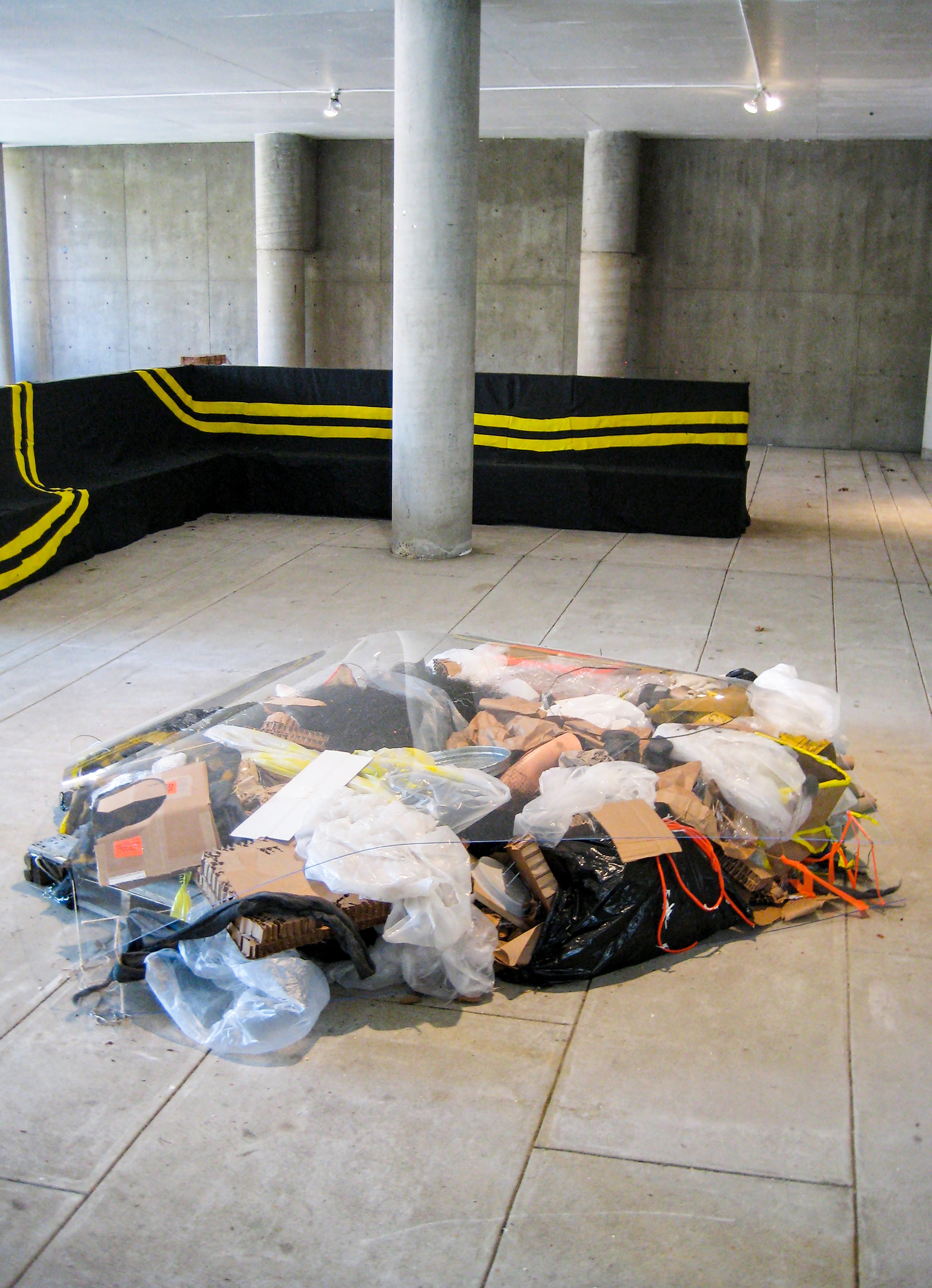Left to Right:
aluminum, concrete
139” x 50” x 32”
2010
honeycomb cardboard, nylon
36" x 62" x 30"
2010
burlap, thread, paint
dimensions variable
2010
Interstices
Featured in Index: VES Thesis Show, Carpenter Center for the Visual Arts at Harvard University (Cambridge, MA), April-May 2010
I seek to unpack the duality of contemporary society as a set of linear systems and strategies that organize, while controlled by, the nonlinearity of humans and nature. Marginality – the periphery and the transition between two spectra – results from this tension. Dirt and waste are fundamental to marginality. The anthropologist Mary Douglas describes: “Dirt…is never a unique, isolated event. Where there is dirt, there is system. Dirt is the by-product of a systematic ordering and classification of matter, in so far as ordering involves rejecting inappropriate elements.” Waste is similarly considered unwanted and unusable. Literal human refuse and the material debris of consumption culture are wastes innate to contemporary existence. Waste removal shapes public and periphery space – sewer systems, landfills, portable toilets – thus defining expectations of modern community development.
Although the visual understanding of the world becomes greater through satellite photos and endless webpages dedicated to the experience and statistics of such marginal spaces, physical access is still limited to a few traditional means – car, boat, plane. Access remains key in landscapes of technocracy and capitalism in which the signifiers of these ubiquitous systems are often visually marginalized. Wireless devices facilitate the invisible web of the contemporary but they themselves are not invisible. While biological cycles drive humanity, the technology and manufacturing industries function on the creation-obsolescence-abandonment cycle, further ensuring a landscape dominated by chemicals and materials whose environmental and social impacts are currently in the nascent stages.
Psychologically, the individual becomes progressively autonomous and anonymous as systems contort to celebrate constant self-reflection but through means of engaging in a limited set of processes and tools. Appropriation, reappropriation, and nostalgia result from high levels of cultural saturation, which is maintained by accelerating cyclical motion. Progress is thus increasingly defined by the desire at the circumference to steer off course, and by the relationship between the self-aware and the lacunae.
Front:
The Society of the Post Consumption
acrylic, refuse of studio work and found objects from 2006-2010
20” x 72” x 96”, 32" x 42" x 15", 26" x 36" x 12"
2010







